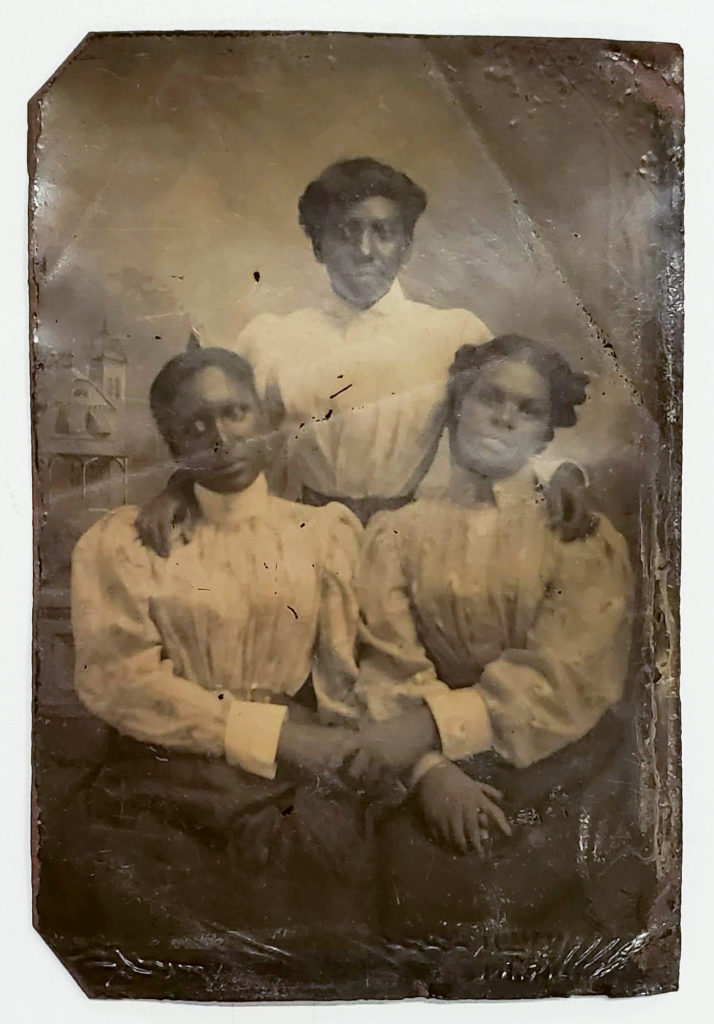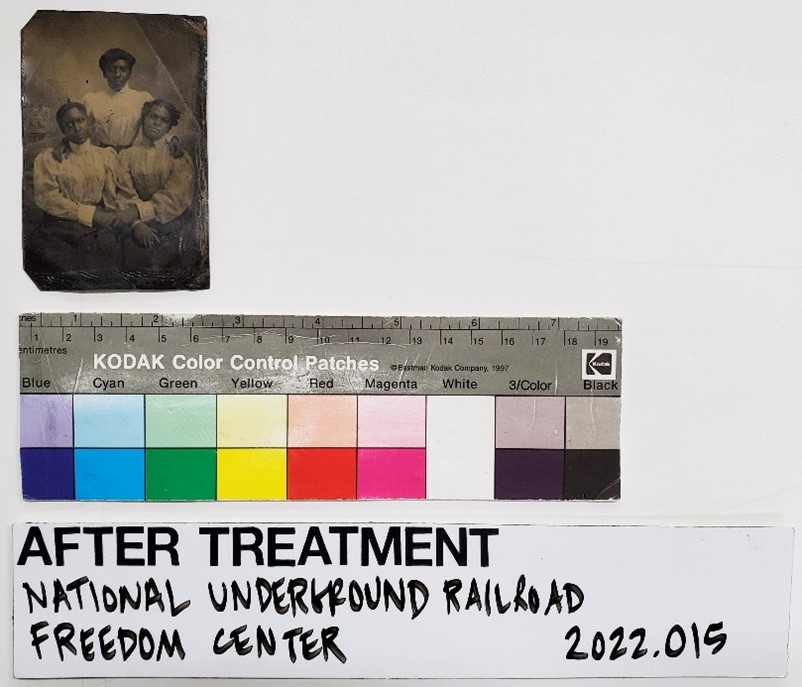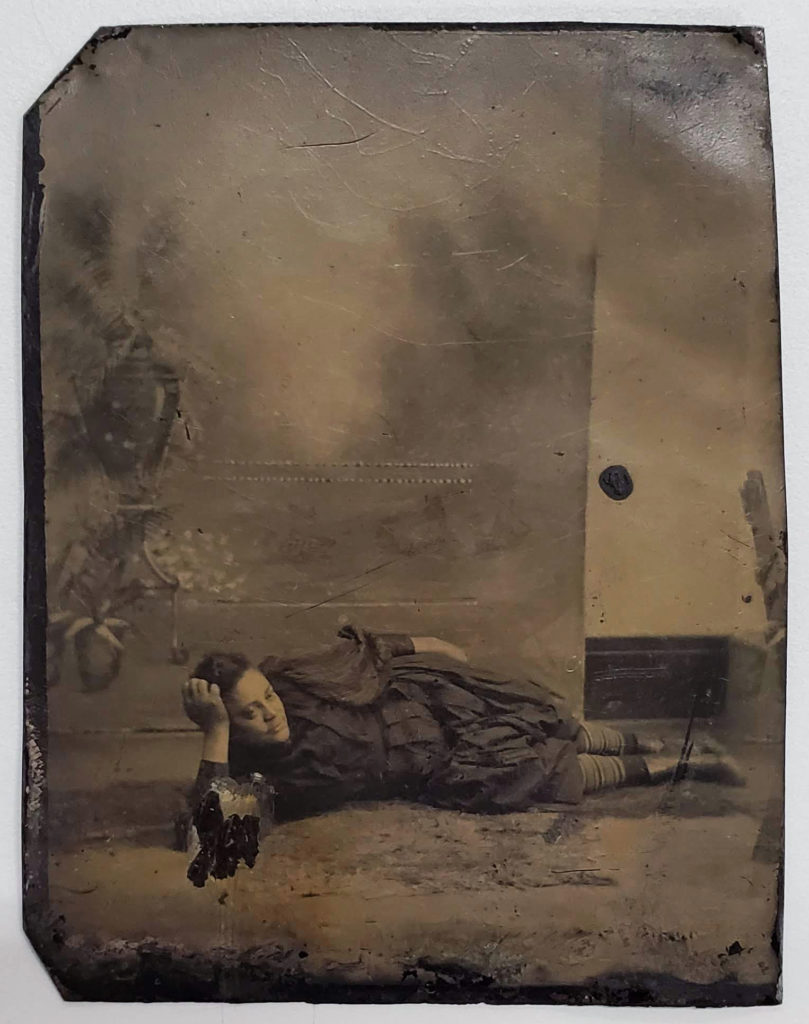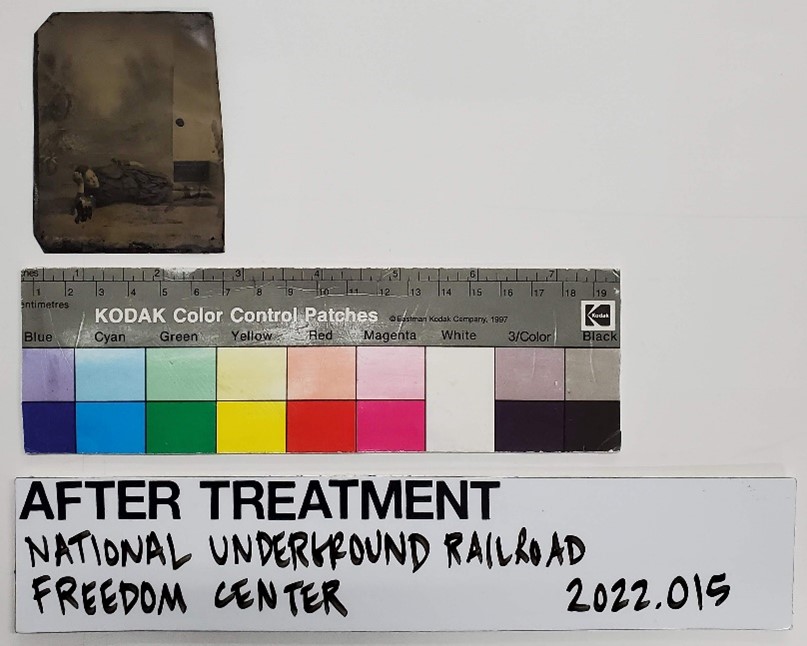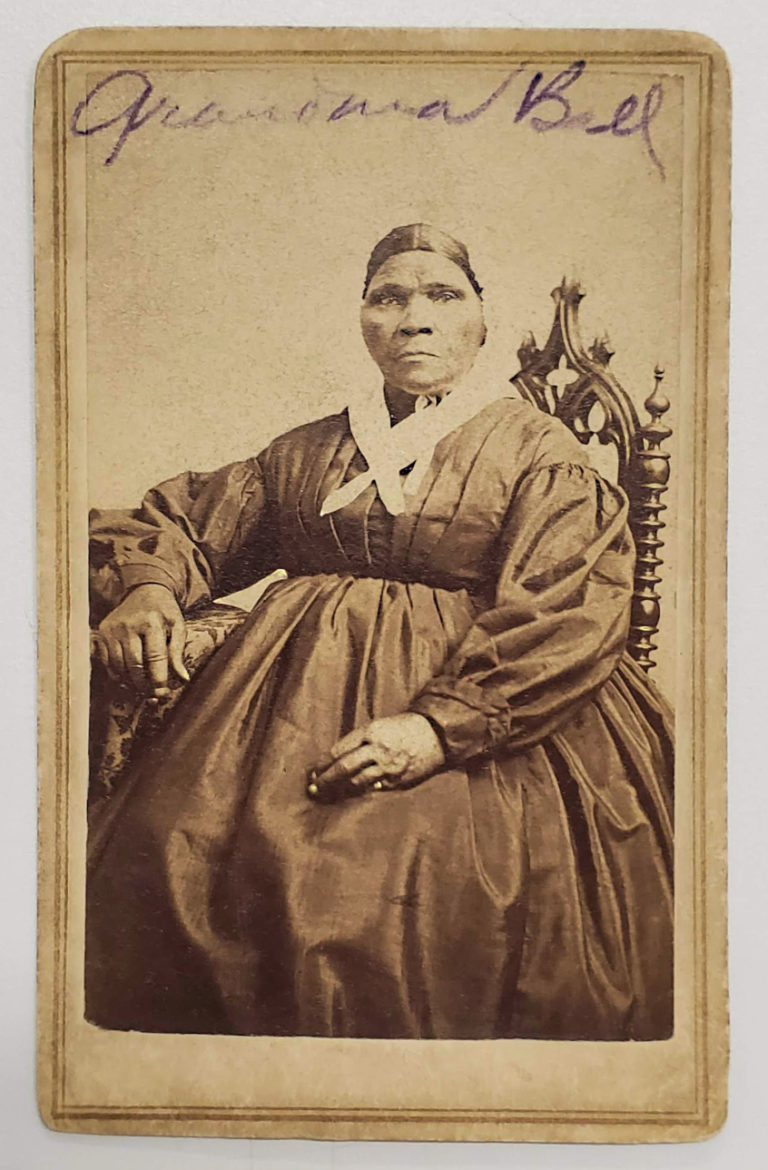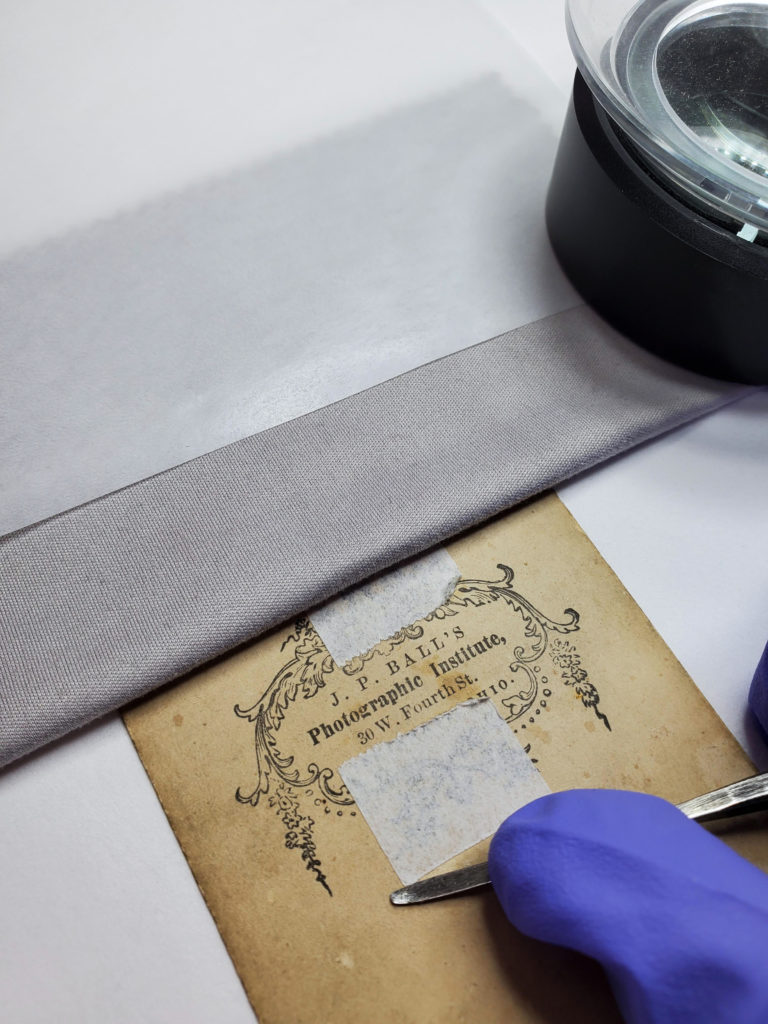The National Underground Railroad Freedom Center currently has three tintypes and one carte-de-visite (CDV) from its museum collection on display in the FotoFocus Biennial special exhibition ‘Free as they want to be’: Artists Committed to Memory co-curated by Deborah Willis, Ph.D. and Cheryl Finley, Ph.D.
‘Free as they want to be’: Artists Committed to Memory is open September 30, 2022 through March 5, 2023. Learn more→
As I reviewed images of the other pieces that would be included in this exhibition, I looked at the Freedom Center’s collection of historical photographs and selected four that depict images of Black women reclining, embracing, and posing in a photography studio. These photographs from the 1890s are empowering, beautiful, and fragile. There is a lot of literature on the history of photography and its impact, but CDV’s in particular were more affordable and more accessible. More people could participate in the experience of being photographed or sitting for a photograph but what I like about the pieces we have displayed in the Fotofocus “Free as they Want to Be” exhibition is they fit the theme.
These 19th century images capture the social life, beauty, and style of Black women during this period, and the co-curators agreed. Each woman is dressed up, their hair is styled, they’re being photographed in a studio and looking at the camera. Grandma Ball is in a very distinguished, and regal pose, in a decorative chair. I think seeing more images like this is really empowering because it takes the focus off some of the stereotypical images you might find. These photos do exist; Black women were being photographed too.
